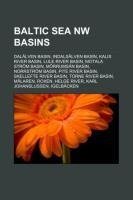
Baltic Sea NW basins
Source: Wikipedia. Pages: 30. Chapters: Dalälven basin, Indalsälven basin, Kalix River basin, Lule River basin, Motala ström basin, Mörrumsån basin, Norrström basin, Pite River basin, Skellefte River basin, Torne river basin, Mälaren, Roxen, Helge River,... Viac o knihe
Produkt je dočasne nedostupný
14.08 €
bežná cena: 16.00 €
O knihe
Source: Wikipedia. Pages: 30. Chapters: Dalälven basin, Indalsälven basin, Kalix River basin, Lule River basin, Motala ström basin, Mörrumsån basin, Norrström basin, Pite River basin, Skellefte River basin, Torne river basin, Mälaren, Roxen, Helge River, Karl Johanslussen, Igelbäcken, Bällstaån, Vättern, Råcksta Träsk, Lillsjön, Siljan, Judarn, Sätraån, Kyrksjön, Lesser Lule River, Rautas River, Döda Fallet, Fyris, Ume River, Tärendö River, Ångerman River, Ljusnan, Akkajaure, Ljungan, Lainio River, Muonio River, Könkämäeno, Emån, Stångån, Västerdal River, Österdal River, Kolbäcksån, Rapa River, Bodträskån, Hedströmmen, Hornavan, Råne River, Eskilstunaån, Brömsebäck, Oreälven, Gide River, Hjälmaren, Köping River, Töre River, Sangis River, Lake Kilpisjärvi, Keräsjoki, Torneträsk, Hjälmare kanal, Storforsen, Södertälje Canal, Strömsholm Canal, Storavan, Åsnen, Stora Lulevatten, Pihtsusköngäs, Tengeliönjoki, Lake Rämen, Liakanjoki, Lätäseno, Karats. Excerpt: Karl Johanslussen ("Lock of Charles John") is a lock and a sluice, connecting and controlling the flood discharge between Riddarfjärden, the easternmost part of Lake Mälaren, and Saltsjön, the section of the Baltic Sea reaching into central Stockholm, Sweden. The lock is 75 meters long, 10 meters wide and 3.90 meters deep. The maximum height is 3.8 meters. Before World War I, few of the steam ships in the harbor of Stockholm were larger than 500 tonnes, and the previous lock thus largely sufficient. While commercial traffic was relocated to Hammarbyleden passing south of Södermalm in 1926-1929, the present lock, completed in 1935, was still used by some 3,000 commercial vessels in 1970s, and log rafts passed through the canal until the 1950s. Its main function is however to allow passage for pleasure boats and sightseeing boats. Like the surrounding area Slussen, named after the lock and built simultaneous to it in 1930-1935, the lock is a concrete construction resting on franki piles (e.g. cast-in-situ piles) located along the sides of the canal and next to the gates. The base plate is made of reinforced concrete, reinforced with steel sleepers next to the gates. The walls of the canal are dressed in granite reinforced with vertical iron rebates stretching three meters from the bottom and horizontal anchoring irons. The two gates are sheeted with steel and lowered from the overhead road bridge, each of them operated with individual machinery hidden in the premises south of the canal. This sort of gates can be operated independent of water pressure, which makes additional aperture and culverts unnecessary for turning the lock. For historical images, see external links. Detail from Vädersolstavlan showing the area in 1535 viewed from south-west. Detail from a copperplate by Frantz Hogenberg in the 1560s showing the area viewed from south-east.Following the decline of the military importance of the southern city gate, the area south of the city became the subject for
- Vydavateľstvo: Books LLC, Reference Series
- Formát: Paperback
- Jazyk:
- ISBN: 9781156016701


 Anglický jazyk
Anglický jazyk 



 Nemecký jazyk
Nemecký jazyk 





